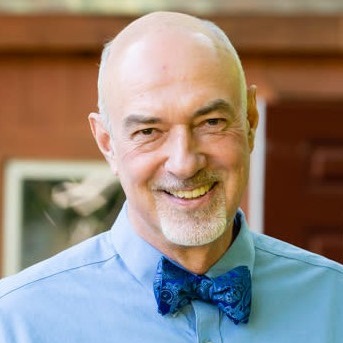Commentary on Matthew 11:2-11
This lectionary reading takes up only the first half of Jesus’ reply to John the Baptizer’s question about whether Jesus is, indeed, the “coming one.” Jesus’ full reply begins with a list of sign-acts (11:4-5) that he has been performing, whose meaning John and the rest of Jesus’ audience, must then interpret. The second portion of Jesus’ reply (11:7-15) offers first a comic exploration of what the audience sought when they went into the wilderness to be baptized, then Jesus’ own assessment of John’s role in God’s work to redeem Israel. Jesus then closes his homily with a sharp challenge aimed at “this generation,” a term that in Matthew persistently designates the self-righteous and powerful elites who have resisted John and now also Jesus. At the heart of Jesus’ reply to John is the question of how we come to discern God’s power and presence in our midst, both in the ministry of John as the forerunner and in Jesus, who brings to fruition God’s redemptive will for Israel, the nations, and ultimately the whole creation.
The sources of resistance to John and Jesus
Jesus’ acts of healing and restoration in Matthew 8-9 are signs that through him God is gathering and restoring Israel for harvest (9:36-38). While the harvest fulfills the promise to restore and prepare Israel to fulfill its mission to the nations, division and judgment are accompanying realities. John’s question concerns both what actions he expected of Jesus and, thus, whether Jesus is really the Christ. Another question is implied: will John (and we) stand with or against him? The scribes, Pharisees, and other leaders, who might be expected to recognize more clearly than others the nature and meaning of Jesus’ ministry, have already set their wills against him. Is “this generation,” which will soon kill both John and Jesus, looking for the wrong signs? Or do they already discern the possibility that his coming constitutes a threat to their status or way of life? Do their investments in the status quo or their trust in their own righteousness make it impossible to accept the signs of God’s coming, whether in judgment, redemption, or both? Why do those who see themselves as the righteous so often stand on the wrong side of God’s will and work?
What to make of Jesus?
With John’s question about whether Jesus is really “the one coming,” we are left to wonder which side of the judgment John himself may be on. John’s question may express a hopeful, if hesitant, sense that Jesus is indeed the one expected to carry out the restoration of God’s people, or it may convey exasperation, impatience, or even doubt, if not about whether Jesus is the Messiah, at least about why he doesn’t express his true identity more forcefully. John’s own ministry, which carried a healthy dose of judgment, seems to have roots especially in Malachi 3:1-5, which says that the one who prepares the way for the day of the Lord’s coming refines and purifies the people with both soap and fire. Jesus’ ministry, in contrast, has focused on healings, exorcisms, and public banquets with tax collectors and sinners—in other words, strong on healing and restoration, but weak on judgment and vindication. As John sits in Herod Antipas’ prison, awaiting death (14:1-12), he may be wondering whether and when the liberation of God’s people from bondage and oppression will really take place. So far, the dominion of Rome and of local rulers like Herod Antipas and the Jerusalem priesthood remains undisturbed. What kind of messiah leaves the forerunner in prison?
Today, many Christians may ask similar questions: if Jesus is really the one who brings God’s rule to fruition, why is our world still marked by exploitation, injustice, polarization, and violence? Why are we still waiting? How long must we wait? Will Jesus really come to redeem those who suffer, or should we look for another? The answer lies not in any academic or technical adjudication of Christological titles and actions, but in what one makes of the signs Jesus performs: do we believe that when the blind see, the lame walk, lepers are cleansed, the deaf hear, the dead are raised, and the poor have the good news proclaimed to them that we are seeing God’s power? Or are we looking for something else? How is God’s power still evident today? Will we experience the good news as redemption or judgment?
Judgment and redemption
Matthew’s Gospel persistently links judgment and redemption inextricably together, as two faces of a single reality. The signs that define Jesus’ ministry in 11:5 echo passages in Isaiah that mingle announcements of vengeance and judgment with the promise of liberation (for example, Isaiah 29:18-19, 35:5-6, 42:18, 61:1-3). In these passages, as in the ministry of Jesus, the blind, the deaf, the poor, et cetera, refer not just to the individuals Jesus heals, but metaphorically to the condition of God’s people as a whole, including John and Jesus’ own disciples. Because God’s coming brings both judgment and redemption, we should not be surprised that John and Jesus encounter both welcome from some and powerful opposition from others. This is simply the nature of the “good news.” Does the gospel we proclaim and embody today, especially as congregations, generate such diverse and powerful responses? Do the signs of God’s presence and power among us correspond with those of John or Jesus? What vision and values do those around us see at work in our midst?
What did you go out to see?
John drew crowds into the wilderness because they were seeking alternatives to the realities their political and religious leaders imposed upon them. Jesus reminds his audience that John was not like the political rulers, neither a wimp buffeted by the wind nor someone trying to look important in their finery—there were plenty of these in Jerusalem. They went to see God’s true prophet. The wilderness in which John ministers is an alternative to the imagery and pomp of cities like Jerusalem. It is also the place where God’s people were first formed. John calls them to repentance, to turn from the idols of this world and to be cleansed, so that they might join him in making straight paths for the coming one. That way is discovered among the blind, the lame, the unclean, the deaf, and the dead.


December 11, 2022